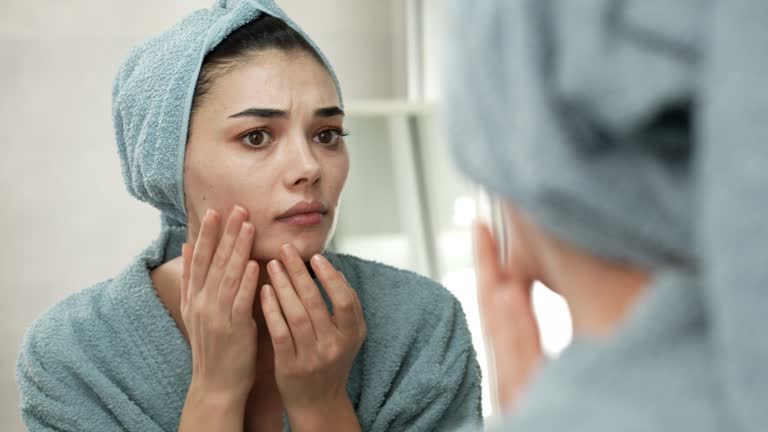The Vital Importance of Patch Testing New Products
As a beautician, you are likely aware of the vast array of skincare and cosmetic products that flood the market each year. While these products promise to enhance beauty and improve skin health, they also come with potential risks. This is where the importance of patch testing new products becomes crucial. Patch testing can save your clients from potential allergic reactions and ensure their skin remains healthy and radiant.

What is Patch Testing?
Patch testing involves applying a small amount of a new product to a discreet area of the skin, often behind the ear or on the inner forearm. This process helps determine if the product causes any adverse reactions, such as redness, itching, or swelling. The test area should be monitored for at least 24 to 48 hours to ensure no delayed reactions occur.
Why is Patch Testing Crucial for Beauticians?
For beauticians, understanding the importance of patch testing new products is vital in maintaining client trust and safety. Clients rely on your expertise to recommend and apply products that will enhance their beauty without compromising their skin health. By incorporating patch testing into your routine, you demonstrate a commitment to their well-being and establish yourself as a knowledgeable and caring professional.
Preventing Allergic Reactions
Allergic reactions to skincare and cosmetic products can range from mild irritation to severe dermatitis. As a beautician, it is your responsibility to prevent these reactions whenever possible. By conducting a patch test, you can identify ingredients that may trigger allergies and avoid using those products on your clients. This proactive approach not only protects your clients but also enhances your reputation as a responsible practitioner.
Ensuring Product Compatibility
In addition to preventing allergies, patch testing helps determine a product's compatibility with a client's skin type. Not all products are suitable for every skin type, and a patch test can help identify which products work best for each individual. This personalized approach allows you to tailor your services to meet the unique needs of your clients, resulting in more effective treatments and satisfied customers.
How to Conduct a Patch Test
Conducting a patch test is a straightforward process that can be easily incorporated into your salon routine. Heres a step-by-step guide:
Step 1: Choose the Test Area
Select a small, discreet area of the client's skin, such as behind the ear or on the inner forearm. This area should be clean and free from any existing products.
Step 2: Apply the Product
Apply a small amount of the new product to the chosen test area. Ensure the product is applied as it would be in a typical treatment, using the same application method and amount.
Step 3: Monitor the Area
Advise your client to monitor the test area for at least 24 to 48 hours. Instruct them to look for any signs of redness, itching, swelling, or other adverse reactions.
Step 4: Assess the Results
If no adverse reactions occur, the product is likely safe for use. However, if any irritation or allergic response is observed, the product should be avoided.
Common Ingredients That May Cause Reactions
Understanding common ingredients that can cause skin reactions is essential for any beautician. Ingredients such as fragrances, preservatives, and certain botanical extracts are known to cause allergies in some individuals. Familiarizing yourself with these ingredients and their potential effects can help you make informed product choices and recommend safer alternatives to your clients.
Fragrances
Fragrances are among the most common allergens in skincare products. Many clients may not realize they are sensitive to fragrances until a reaction occurs. Opting for fragrance-free products or conducting a patch test can help prevent unwanted reactions.
For more detailed information on how environmental factors can affect skin, you can visit this link.
Preservatives
Preservatives like parabens and formaldehyde releasers are often used to extend the shelf life of products. However, they can also cause skin irritation or allergic reactions. Testing products with these ingredients is particularly important.
Educating Clients About Patch Testing
As a beautician, part of your role is to educate your clients on the importance of patch testing new products. Encourage them to perform patch tests at home before using any new product, and explain the potential risks of skipping this step. By empowering your clients with knowledge, you foster a sense of trust and loyalty that can lead to long-term client relationships.
Conclusion
The importance of patch testing new products cannot be overstated, especially in the beauty industry. By incorporating patch testing into your practice, you protect your clients from potential harm, enhance their satisfaction, and uphold your professional reputation. In an industry where trust and results are paramount, patch testing is an invaluable tool in delivering exceptional service.
For further reading on preventing body acne, check out this link.

FAQs
What is a patch test in skincare?
A patch test involves applying a small amount of a product to a discreet area of the skin to check for allergic reactions or irritation before full application.
How long should a patch test be observed?
A patch test should be observed for at least 24 to 48 hours to monitor for any delayed reactions such as redness, itching, or swelling.
Can patch testing prevent all allergic reactions?
While patch testing can significantly reduce the risk of allergic reactions, it may not prevent all reactions. It is a precautionary step to identify potential issues before full usage.

